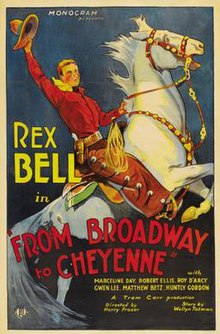
Scarface is a 1932 American gangster film directed by Howard Hawks and produced by Hawks and Howard Hughes. The screenplay, by Ben Hecht, is based loosely on the 1929 novel by Armitage Trail, which was inspired by Al Capone. The film was developed and released during the pre-Code era of Hollywood. The film stars Paul Muni as Italian immigrant gangster Antonio "Tony" Camonte who violently rises through the Chicago gangland, with a supporting cast that includes George Raft and Boris Karloff. Camonte's rise to power dovetails with his relentless pursuit of his boss's mistress while his own sister pursues his best hitman. In an overt tie to the life of Capone, a version of the Saint Valentine's Day Massacre is depicted.
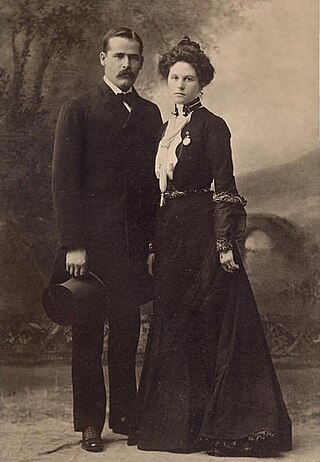
Harry Alonzo Longabaugh, better known as the Sundance Kid, was an outlaw and member of Butch Cassidy's Wild Bunch in the American Old West. He likely met Butch Cassidy during a hunting trip in 1883 or earlier. The "Wild Bunch" gang performed the longest string of successful train and bank robberies in American history.
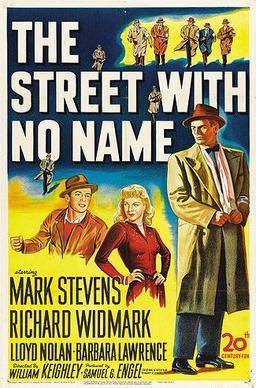
The Street with No Name is a 1948 American film noir directed by William Keighley. A follow-up to The House on 92nd Street (1945), it tells the story of an undercover FBI agent, Gene Cordell, who infiltrates a deadly crime gang. Cordell's superior, FBI Inspector George A. Briggs, also appears in The House on 92nd Street. The film, shot in a semidocumentary style, takes place in the Skid Row section of fictional "Center City".

Harold Vincent Guardino was an American actor whose career ran from the early 1950s to the early 1990s.

Red River Range is a 1938 "Three Mesquiteers" Western film starring John Wayne, Ray Corrigan, Max Terhune, and Polly Moran. Wayne played the lead in eight of the fifty-one movies in the popular series. The director was George Sherman.
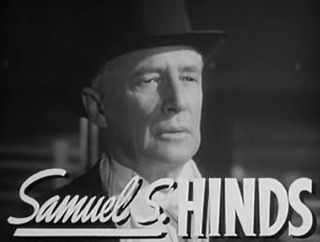
Samuel Southey Hinds was an American actor and former lawyer. He was often cast as kindly authority figures and appeared in more than 200 films in a career lasting 22 years.
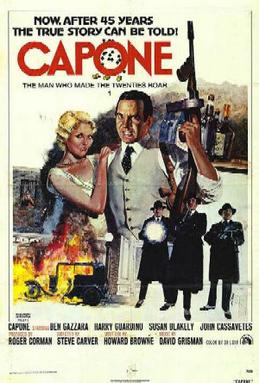
Capone is a 1975 American action crime film directed by Steve Carver, written by Howard Browne, and starring Ben Gazzara, Harry Guardino, Susan Blakely, John Cassavetes, and Sylvester Stallone in an early film appearance. The film is a biography of the infamous gangster Al Capone.
David "Noodles" Aaronson is a fictional character who is the protagonist of the 1952 novel The Hoods by Harry Grey, and of the book's 1984 film adaptation, Once Upon a Time in America, where he was portrayed by Robert De Niro. Noodles reappears, only to die in 1937, in Grey's second novel Call Me Duke (1955). However, Call Me Duke has never been filmed, and the material concerning Noodles was not used in Once Upon a Time in America where he is depicted still living in 1968.

Harry Lewis Woods was an American film actor.

Horace McMahon was an American actor. He was one of Hollywood's favorite heavies.
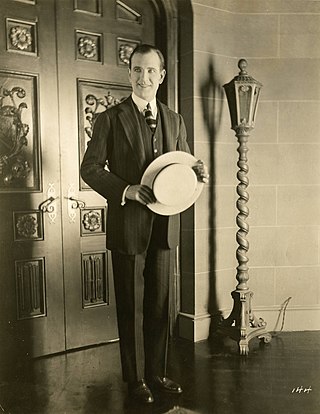
Robert Ellis Reel, known professionally as Robert Ellis, was an American film actor, screenwriter and film director. He appeared in more than 160 films between 1913 and 1934. He also wrote for 65 films and directed 61.

Trouble Makers is a 1948 American comedy film directed by Reginald LeBorg and starring The Bowery Boys. The film was released in 1948 by Monogram Pictures, although the exact release date is uncertain, although two possible released dates are mentioned in different books, December 10, 1948 and December 26, 1948. It is the twelfth film in the series.
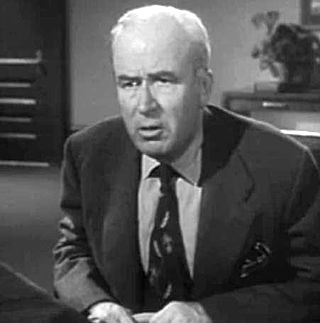
Harry Shannon was an American character actor. He often appeared in Western films.
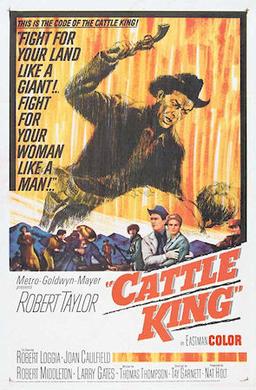
Cattle King is a 1963 American Western film directed by Tay Garnett. It stars Robert Taylor and Robert Loggia. It was also known by the alternative title of Guns of Wyoming in some countries.
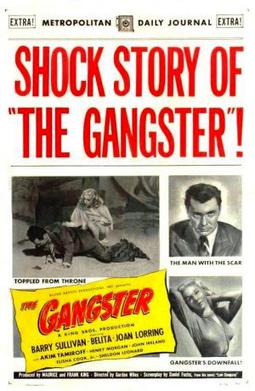
The Gangster is a 1947 American crime film noir starring Barry Sullivan, Belita, Joan Lorring and Akim Tamiroff. It was directed by Gordon Wiles, with a screenplay by Daniel Fuchs, based on his novel Low Company (1937).

Yodelin' Kid from Pine Ridge is a 1937 American Western film directed by Joseph Kane and starring Gene Autry, Smiley Burnette, and Betty Bronson. Based on a story by Jack Natteford, the film is about the son of a Southeastern cattleman who becomes entangled in a war between the cattlemen and "turpentiners" who make their living harvesting pine tree sap.
The Hogan Gang was a St. Louis–based criminal organization that sold illegal liquor during Prohibition in addition to committing labor slugging, voter intimidation, armed robbery, and murder. Although predominantly Irish-American, the Hogan Gang included several Italian and Jewish mobsters amongst their ranks; most notably, Max "Big Maxie" Greenberg. They fought a notoriously violent gang war with Egan's Rats in the early 1920s.

Johnny Broderick was a New York City Police Department detective who became known in the 1920s and 1930s as one of the city's toughest officers, patrolling the Broadway Theater District and policing strikes as head of the NYPD's Industrial Squad, sometimes personally beating gangsters and suspects.
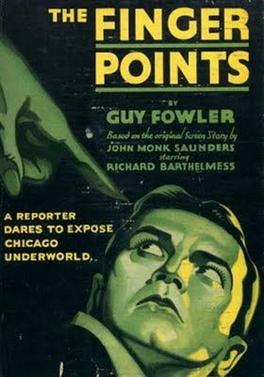
The Finger Points is a 1931 American Pre-Code drama film directed by John Francis Dillon and written by John Monk Saunders, W.R. Burnett and Robert Lord. The film stars Richard Barthelmess, Fay Wray, Regis Toomey, Robert Elliott, Clark Gable, Oscar Apfel and Robert Gleckler. The film was released by Warner Bros. on April 11, 1931.
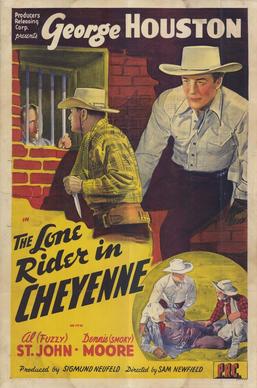
The Lone Rider in Cheyenne is a 1942 American Western film directed by Sam Newfield and written by Oliver Drake and Elizabeth Beecher. The film stars George Houston as the Lone Rider, Al St. John as his sidekick "Fuzzy" Jones, and Dennis Moore as Sheriff Smoky Moore, with Ella Neal, Roy Barcroft and Kenne Duncan. The film was released on March 20, 1942, by Producers Releasing Corporation.
